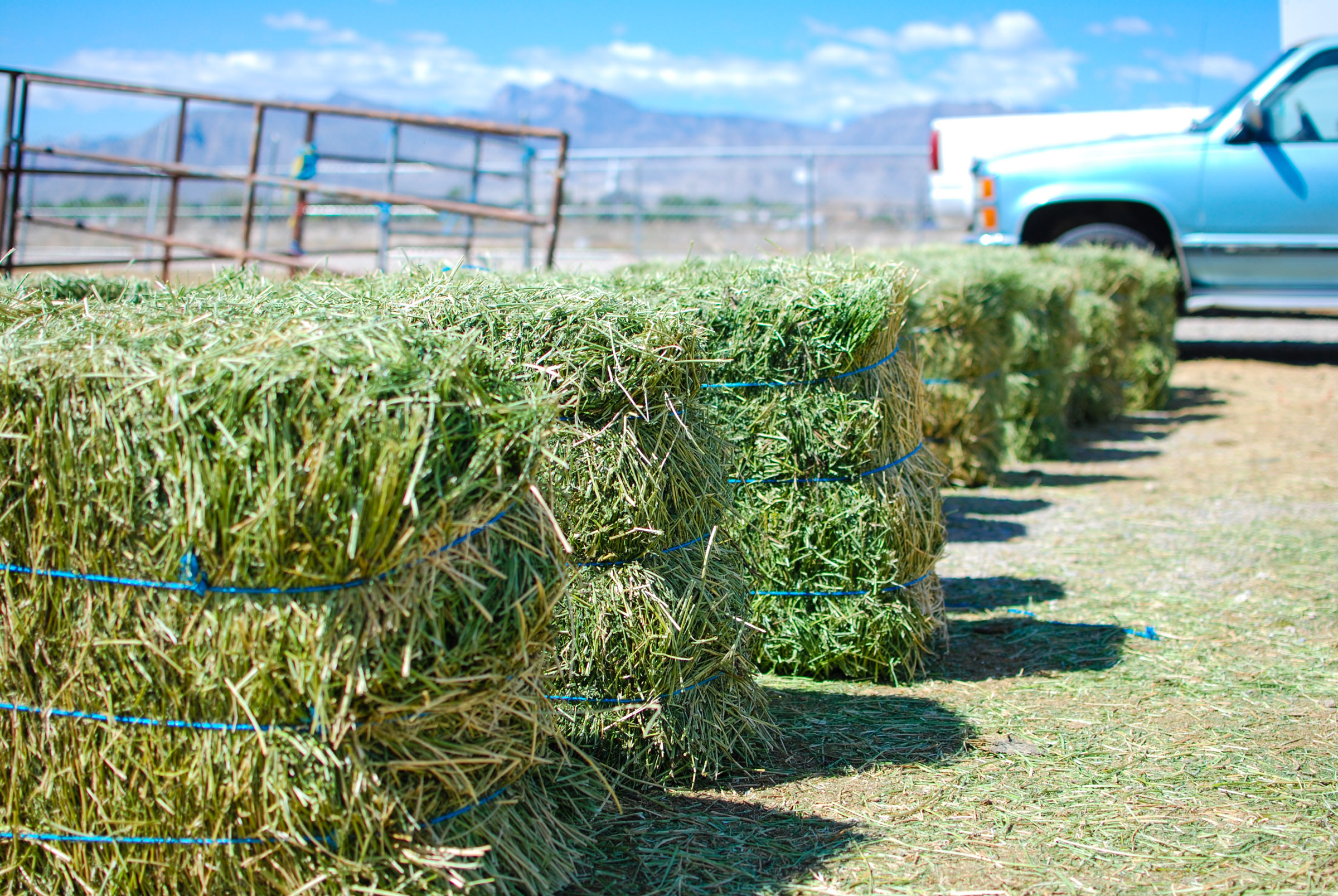
The type of hay you feed the horses in your barn depends on a number of factors, including geographic location, price and the horse’s nutritional needs. Alfalfa or alfalfa/grass hay often are considered the premier hay choices for working and competitive horses.
“Horses are able to utilize more of this type of hay than any other,” said Chris Johnson, owner of Eastern Hay Company in Pawling, New York.
Alfalfa is classified as a legume. The legume family can also include red clover and birdsfoot trefoil, among others. Price and geographic location often dictate whether it is a viable option for stable owners.
Western states, including Arizona, Idaho, Nebraska, Oklahoma, Wyoming and Kansas, are best known for producing top-notch alfalfa thanks to these state’s arid climate. In geographic locations with drier climates, hay cures faster in the fields, which preserves a higher percentage of nutritional content. That’s not to say that hay grown on the East or West Coast can’t be good quality, it means it might lose some of its nutritional value because moist air means longer drying time in the field.
Grass hays are the other main forage source for horses, with timothy considered the top-tier grass hay.
“Timothy is the second-most-preferred hay behind alfalfa,” Johnson said.
Brome, orchard grass and bluegrass are other common grass hays.
Regardless of the type of hay you choose to feed, make sure it’s quality hay and know the nutrient content. Good-quality hay will provide the majority of nutrients the horses in your barn will need. Ask for a nutrient analysis that provides at least the digestible energy (DE) and crude protein (CP).
If you purchase hay that hasn’t been tested for nutrient content, then you should test it yourself. The exact nutritional content can only be determined through a lab analysis. Feed dealers and local cooperative extension agents often have a hay probe you can use to take a hay sample and can instruct you on the process and where to send the samples.
Basically, you collect samples from about 12 different bales and send that mix to the lab of your choice. Within five to seven days, you will receive the results. Your county extension agent or someone at your local land grant university can help you understand the analysis.
Hay is among the top-ranking expenses for a stable, so it’s imperative to choose the best hay for your needs.



